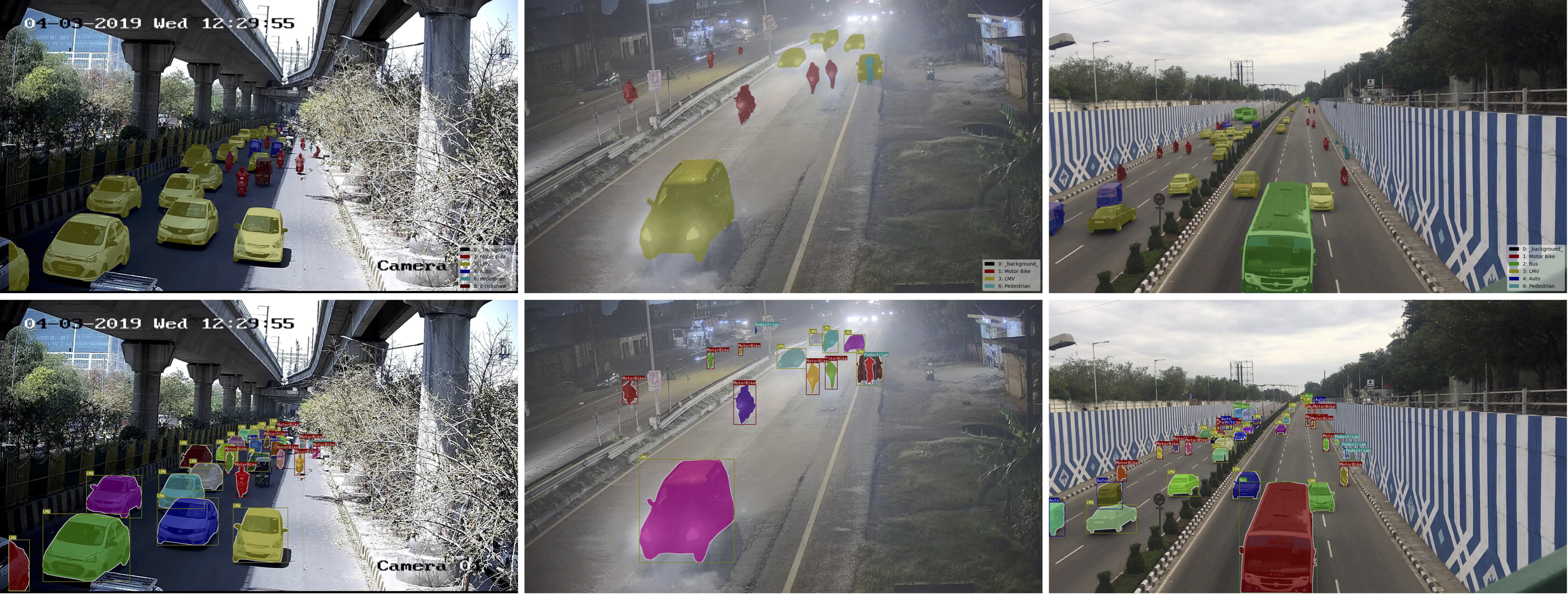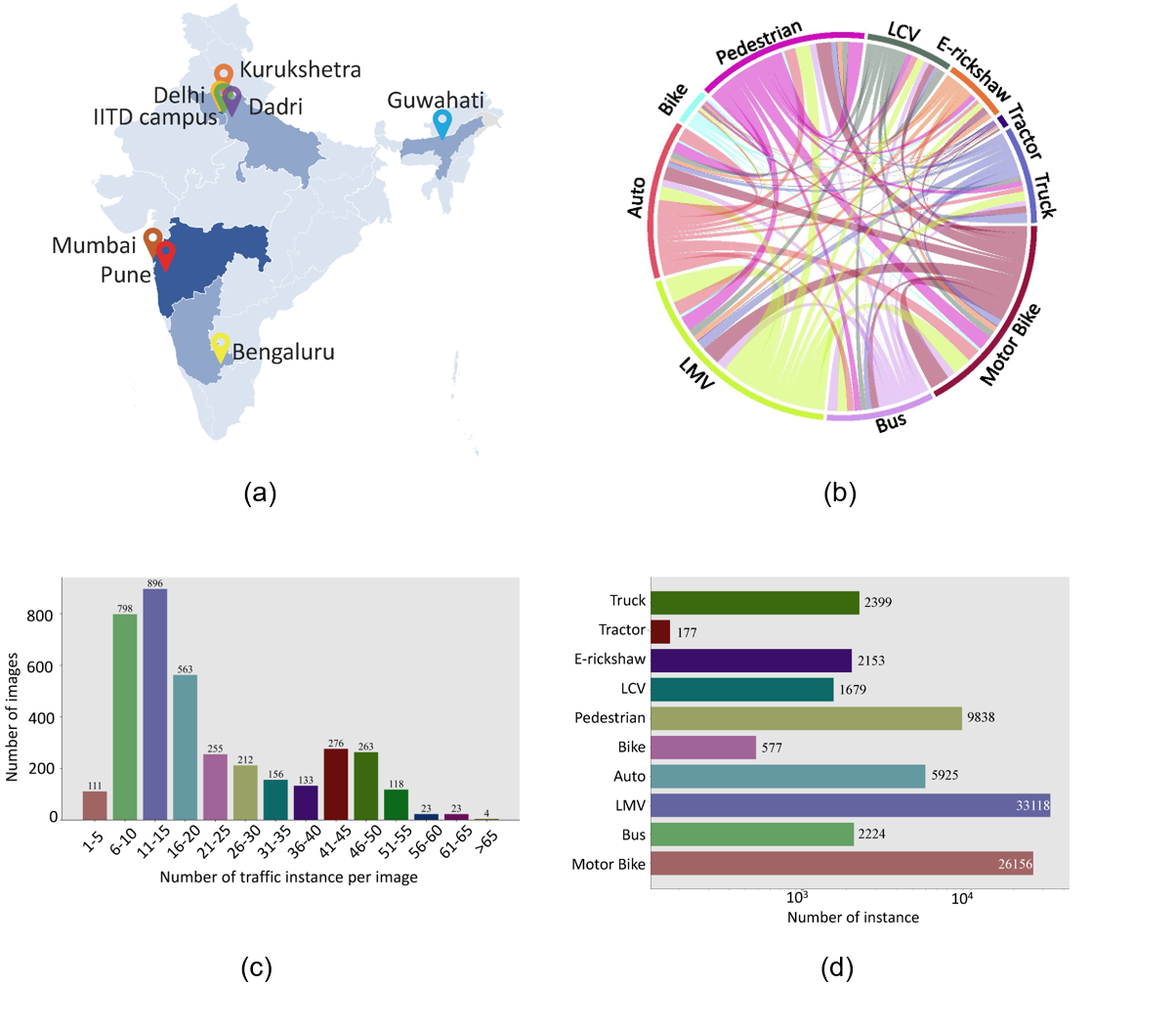|
Traffic flow analysis is revolutionising traffic management. Qualifying traffic flow data, traffic control bureaus could provide drivers with real-time alerts, advising the fastest routes and therefore optimising transportation logistics and reducing congestion. The existing traffic flow datasets have two major limitations. They feature a limited number of classes, usually limited to one type of vehicle, and the scarcity of unlabelled data. In this paper, we introduce a new benchmark traffic flow image dataset called TrafficCAM. Our dataset distinguishes itself by two major highlights. Firstly, TrafficCAM provides both pixel-level and instance-level semantic labelling along with a large range of types of vehicles and pedestrians. It is composed of a large and diverse set of video sequences recorded in streets from eight Indian cities with stationary cameras. Secondly, TrafficCAM aims to establish a new benchmark for developing fully-supervised tasks, and importantly, semi-supervised learning techniques. It is the first dataset that provides a vast amount of unlabelled data, helping to better capture traffic flow qualification under a low cost annotation requirement. More precisely, our dataset has 4,402 image frames with semantic and instance annotations along with 59,944 unlabelled image frames. We validate our new dataset through a large and comprehensive range of experiments on several state-of-the-art approaches under four different settings: fully-supervised semantic and instance segmentation, and semi-supervised semantic and instance segmentation tasks.
|




